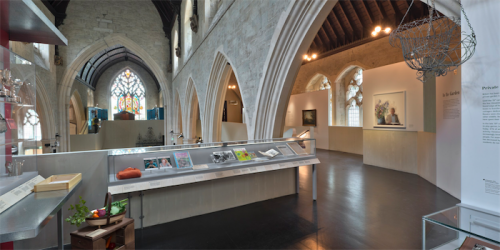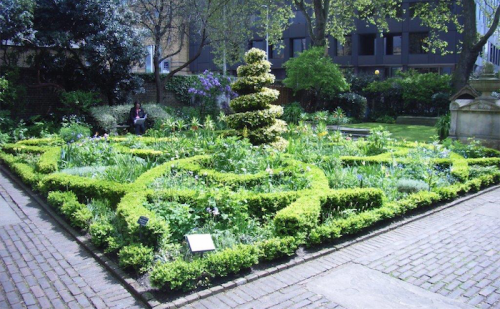

The Garden Museum was established in 1977 by Rosemary Nicholson in the church of St Mary of Lambeth, located on the Thames Embankment next to the town residence of the Archbishop of Canterbury, Lambeth Palace.
The first church on the site pre-dates the Norman Conquest in 1066 and the present one was built in the 14th century. It was damaged by bombs during the last war, although not seriously.
With falling congregations and the huge upkeep it was deconsecrated in 1972. This is where Nicholson came into the picture when visiting the grave of the Tradescants and was shocked to find that the church was scheduled for demolition.
The church and graveyard was of enormous historical importance from a gardening perspective and Nicholson moved quickly to establish the Tradescant Trust in 1977 with a 99-year lease for the site. For any visitor to London, this is a must.

SO, who were the Tradescants? John Tradescant (1570-1638) came to prominence when buying plants for the 1st Earl of Salisbury in Holland for his residence at Hatfield House. Later he was appointed head gardener to Henrietta Maria, the “rose and lily queen of Charles I. Tradescant established London’s first botanic garden in 1629, collecting plants ranging from the Arctic Circle in Russia to Algeria.
His son, also John (1608-1662) married at St Mary’s and succeeded his father as the royal gardener. He travelled frequently to America and between father and son collected plants from three of the four known continents.
Both, together with their families, are buried in St Mary’s churchyard along with another historic figure of interest to Australians – Capt.William Bligh, of Mutiny-on-the-Bounty fame.
When opened as a garden museum, it was appropriate that part of the churchyard was given over to a traditional knot garden, as illustrated here.
Just before going to the museum, I visited Hatfield House where they had just discovered records of the original plant lists and cost of the plants in John Tradescant’s handwriting.

The knot garden features those same plants from his original list of the 17th century, many still available to this day.
One last amazing discovery was made in April, when lifting flagstones in the church and an unknown crypt was discovered with 30 lead-lined coffins containing leaders of the church in England. Five had names on the coffins, which positively identified them as former Archbishops of Canterbury from the 14th and 15th centuries.
TO complete the picture of the importance of St Mary’s at Lambeth and the Tradescant connection, here is a partial list of plants they introduced into England from around the then known world. These include, pears, medlar, quince, walnuts, nectarines, limes, horse chestnuts, magnolias and the tulip tree. Plus many other perennial plants we take for granted such as asters, phlox and making sure tulips from Holland became available in England.
Jottings…
- When growing tall dahlias, as with tomatoes, put the stakes in first. It is the ideal time for planting both without delay.
- Dead-head roses after the first flush of flowers is finished.
- If you have a friendly blue tongue lizard, fill a shallow bowl of water in the garden.
Who can be trusted?
In a world of spin and confusion, there’s never been a more important time to support independent journalism in Canberra.
If you trust our work online and want to enforce the power of independent voices, I invite you to make a small contribution.
Every dollar of support is invested back into our journalism to help keep citynews.com.au strong and free.
Thank you,
Ian Meikle, editor




Leave a Reply